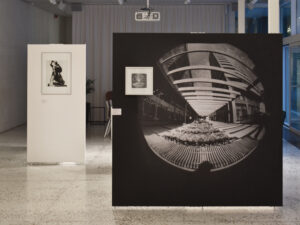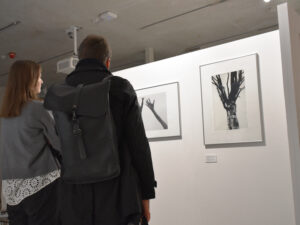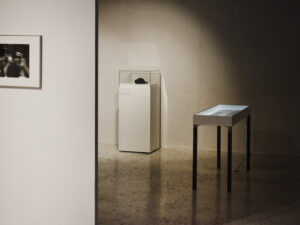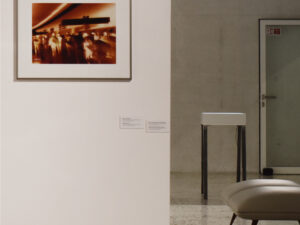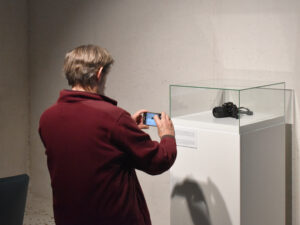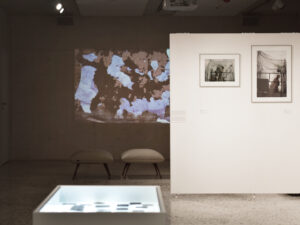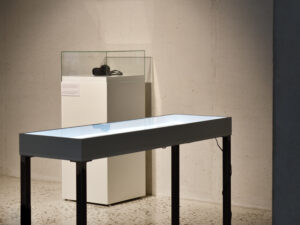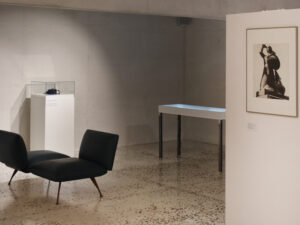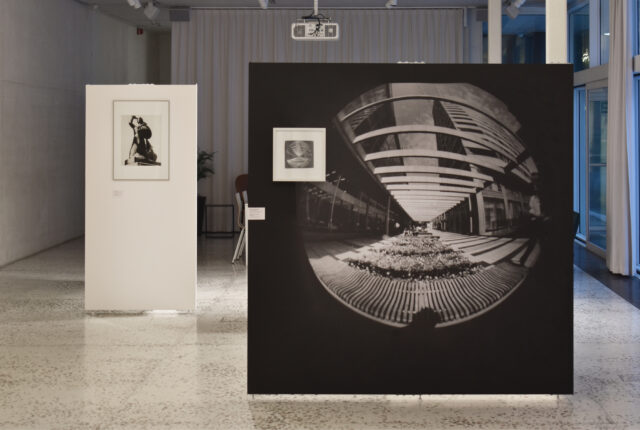
In the exhibition Hartwig’s Warsaw, Warsaw’s Hartwig we present photographs by Edward Hartwig (1909–2003) depicting Warsaw. Hartwig has been called the “father of Polish photography” and “the most important Polish photographer.” His most recognizable motifs are his famous willows, and landscapes from various corners of Poland. He is also known for excellent portraits, including outstanding theatrical photographs. Warsaw as a subject remains a marginal interest in Hartwig’s oeuvre, even though it is the city where he lived and worked for nearly six decades, and was also a major source of his artistic exploration and inspiration.
Hartwig made his first attempt at moving to the capital before the Second World War, when he bought and renovated an apartment on Aleje Ujazdowskie and decorated it for himself and his family. Unfortunately, the building burned down during the Warsaw Uprising. Finally, after many wartime experiences, he managed to carry out his plan in 1951. It was then that Hartwig became permanently associated with Warsaw. He moved here with his family from Lublin and settled on Aleje Jerozolimskie. But even before that he memorialized the capital under reconstruction in numerous photographs. His work from that period was still strongly influenced by pictorialism, along with socialist realism style. He took many sentimental and painterly shots then of the historic sections of Warsaw, directly alluding to his pre-war interest in the old buildings in his hometown of Lublin.
The political and social changes in the mid-1950s, as well as the resurgence of modernism, are marked by visible formal changes in Hartwig’s work. He began then to explore the contemporary city, with its modernist architecture of glass and concrete, simple, geometrical forms gleaming at night with neon. His aesthetic photos from that time depict Warsaw as a modern metropolis, full of life.
As Hartwig described his working method in one of his numerous interviews, “When I walk, I don’t look around blankly. I always catch something interesting, something intriguing, something I don’t know.”
It was a constant quest for new approaches, new forms for his work. The 1990s brought exceptional change. Colour appeared on the streets of Warsaw, but also in Hartwig’s photographs. Often, his colour photographs are material to be discovered today, just as we are rediscovering the architecture of Warsaw from the turn of this century.
The exhibition presents pictures expressing Hartwig’s multifaceted interest in Warsaw and its constant mutability. The changes underway in the urban space are reflected in the photographer’s work. Along with Hartwig, we experience “various Warsaws”—we witness the post-war rebuilding, the modernizing effort of the following decades, postmodern colourfulness, and the reality of the post-communist transformation. We hope that Edward Hartwig’s oeuvre can offer a distinct voice in the debate about Warsaw, its past and also its future.
Colophon:
Curators: Marika Kuźmicz, Adam Parol
Cooperation: Dariusz Mikołajczak
Organizer: Edward Hartwig Foundation
ZODIAK Warsaw Pavilion of Architecture: Monika Komorowska, Katarzyna Sałbut, Artur Wosz, Katarzyna Zachara
Co-financed with funds from the Minister of Culture and National Heritage from the Fund for Promotion of Culture
Co-financed by the City of Warsaw



